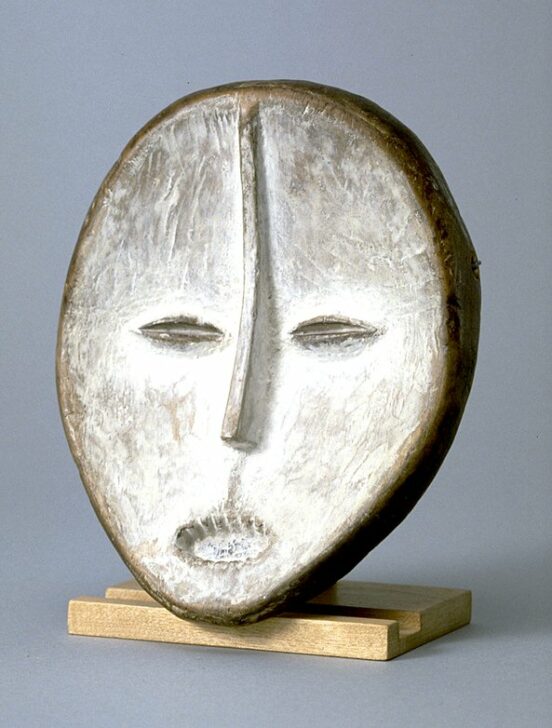Bwami Society Maskette
Lega

Description
(African Art and the Shape of Time; August 18, 2012-February 3, 2013)
11. Mask (probably idimu)
Lega peoples, probably first half of 20th century, wood, kaolin,
University of Michigan Museum of Art, Gift of the Friends of the Museum of Art in memory of Diana B. Fox, 1985/1.151
An object that looks like a mask may function in contexts other than masquerade. In the Lega men’s initiation society called bwami masks are used to transfer political and religious knowledge from generation to generation. The term idimu may be loosely translated as “ancestor.” But this mask does not represent a specific ancestor; it signifies instead both a senior bwami initiate who is regarded as a living ancestor, as well as the esoteric knowledge that he wields and that is ascribed to the mask.
Subject Matter:
This maskette was used in initiation ceremonies associated with bwami, a ranked initiation society open to all Lega men and women. Bwami was the core of Lega identity. Its moral and philosophical precepts permeated all aspects of social and political life. Maskettes were emblems of an individual's rank in the bwami society. They were also used to aid in the instruction of bwami ideas and values. The meaning of individual maskettes were context specific and could change over time.
Physical Description:
Concave, ovoid maskette with kaolin covering surface of surface of face. Minimal rendering of facial features: raised, tapered wood strip for nose; narrow, oviod, horizontal eyes; open, ovoid mouth with some striation around interior edge.
Usage Rights:
If you are interested in using an image for a publication, please visit https://umma.umich.edu/request-image/ for more information and to fill out the online Image Rights and Reproductions Request Form.